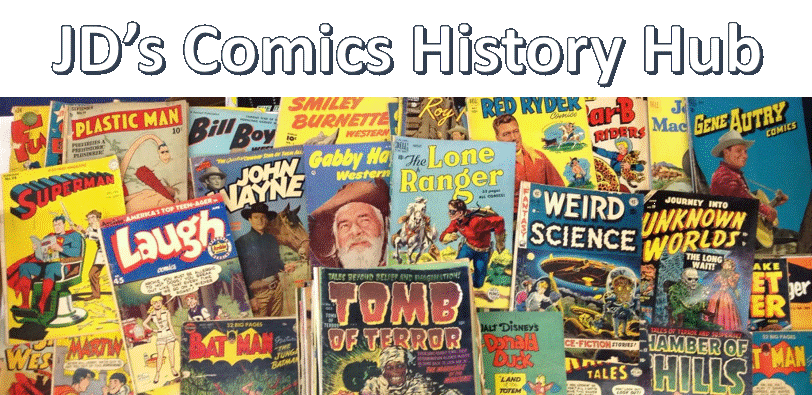If you’re at all knowledgeable about the early history of Superman, you know that the character was featured in a series of 17 theatrical cartoons from 1941 to 1943. And if someone asked you who played Clark Kent in those cartoons, you’d undoubtedly answer Bud Collyer, the same actor who played him on the very popular Superman radio show that began in 1940. But what if I told you that someone else played the role in the cartoons? You’d think I’d been smoking something. But while Collyer was certainly the voice of Clark Kent in the early installments, I’m convinced that someone else replaced him in the later ones.
As you probably know, these lavish and innovative cartoons were originally produced by Fleischer Studios for Paramount until Paramount took over production directly and renamed the operation Famous Studios. The Famous Studios cartoons had a lower budget than the Fleischer ones and are not as highly regarded today by fans and critics.
But getting back to the question of who played Clark Kent, while there were no voice actor credits in the Superman cartoons, anyone who’s listened to the radio show will recognize Collyer’s distinctive voice in the first seven installments. But beginning in Volcano, the eighth and penultimate of the Fleischer-produced ones, we hear what sounds like a different actor playing the part. To my ears, the tonal quality is not the same; it’s more laconic, less engaging, with a very slight hint of a southern drawl.
To illustrate what I’m talking about, here's a clear example of Collyer’s Clark Kent from The Artic Giant (1942):
But in Volcano (1942), the voice sounds very much unlike Bud Collyer:
For a more direct comparison, here's Collyer in The Mechanical Monsters (1941):
Notice how the actor deepens his voice when he changes from Clark to Superman and declares, “This is a job for Superman!” It was a bit of schtick from the radio show, employed to make it clear to listeners that the character was changing personas.
Now here's a similar transformation in Japoteurs (1942):
Notice that this time, the voice actor doesn’t deepen his voice the way Collyer did. There also appears to be less enthusiasm in his delivery. It would seem that this isn’t Collyer.
So if it’s true that another actor took over the part, who was he? Online sources are no help. At this writing, Imdb lists Collyer as starring in all 17 installments of the series. Most offline sources don’t provide the answer either. In the book Super Boys - The Amazing Adventures of Jerry Siegel and Joe Shuster--the Creators of Superman (2013), author Brad Riccca alludes to a casting change by stating, “The voice of Superman for the series was initially provided by Bud Collyer.” But he doesn’t say who replaced Collyer.
The answer comes in the recently published Cartoon Voices of the Golden Age, 1930-70 Vol. 1 by Keith Scott (2022). The author cites a news item discovered by Popeye expert Fred Grandinetti that solves the mystery (though he didn’t know the exact date or newspaper of the item). It’s from the column “The Night Watch” by Jack Kofoed in The Miami News, Monday, April 27, 1942 and reads, “Lee Royce, the handsome baritone at Jimmie’s on the Trail, is the voice of ‘Bruto,’ the heavy-jawed enemy of ‘Popeye,’ in the Fleischer movie cartoons made here. He also is both voice and model for Fleischer’s ‘Superman’ cartoons.”
So who was this Lee Royce guy? In addition to being a popular baritone singer, Royce was comedian Joe Besser’s straight man from 1937 to 1940. (Besser was best-known as one of the Three Stooges in the late 1950s but had a long career previously.) Before that, in the mid-1930s, Royce was part of various burlesque revues that toured the Supreme Circuit. Sometimes he appeared solo, sometimes with singing and dancing partner Edna Mae. In early 1941 and again 1943, Royce appeared in the touring Greater Marcus Show. In late 1941 and early 1942, Royce was featured at a couple of Miami area nightclubs, Bill Jordan’s Bar of Music and Jimmie’s. It was during this period that he was said to have done the Superman cartoons. That makes sense, since the Fleischer studios were in Miami. In 1949, Royce was still in the Miami area, performing in the Minsky’s Follies revue at the Colonial Inn and the burlesque show at Club Monte Carlo.
For the record, here are the 17 Superman theatrical cartoons produced from 1941 to 1943. They can all be found on YouTube.
Fleischer Studios
1. Superman (September 26, 1941)
2. The Mechanical Monsters (November 28, 1941)
3. Billion Dollar Limited (January 9, 1942)
4. The Arctic Giant (February 27, 1942)
5. The Bulleteers (March 27, 1942)
6. The Magnetic Telescope (April 24, 1942)
7. Electric Earthquake (May 15, 1942)
8. Volcano (July 10, 1942)
9. Terror on the Midway (August 30, 1942)
Famous Studios
10. Japoteurs (September 18, 1942)
11. Showdown (October 16, 1942)
12. Eleventh Hour (November 20, 1942)
13. Destruction, Inc. (December 25, 1942)
14. The Mummy Strikes (February 19, 1943)
15. Jungle Drums (March 26, 1943)
16. The Underground World (June 18, 1943)
17. Secret Agent (July 30, 1943)


















































